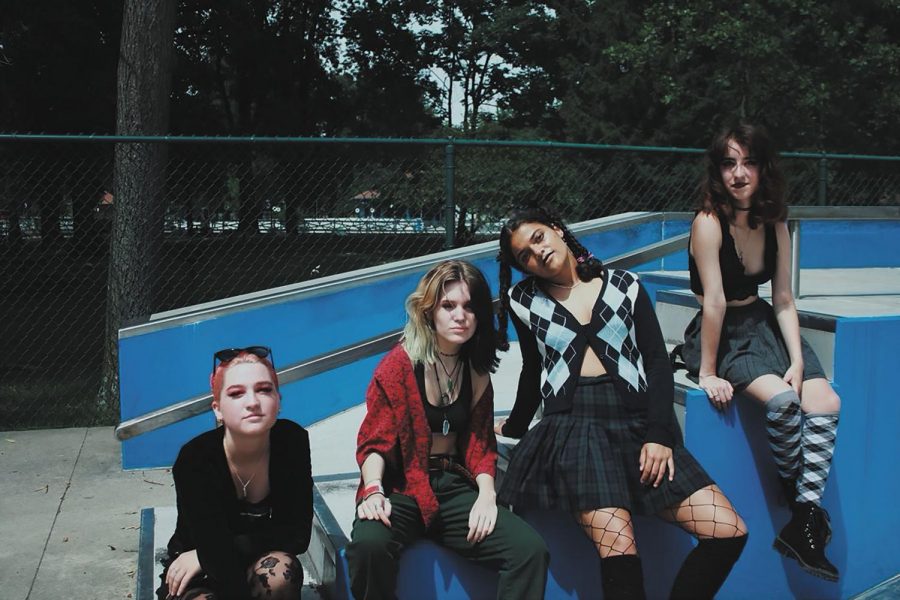Express yourself: Subcultures and aesthetics consume social media
Photo by Rayann Masiarak
Senior Rayann Masiarak had a Sucker Punch themed photoshoot with friends. Masiarak photographed (from left to right) Gabby Thomas, Promise Buckingham, Alyssa Soloman, and Breanna Helms.
November 30, 2020
The ‘80s were painted in the colors of hazy summers afternoons, Coca Cola ads, and teenage rebellion. With high waisted jeans and walkmans also came the popularization of goths, the group of kids that would glare at you behind eyeliner-heavy eyelids and play music that would make your grandma cry. Well, at least that’s what movies would tell you.
Being left alone with TikTok in an age of easily accessible trends naturally allows for teenagers to experiment with what fads tickle their fancy, but with so many buzzwords it’s easy for things to get lost in translation. Amongst these terms, the most important for the sake of understanding some of the internet’s most active groups would be “subcultures” and “aesthetics.”
A subculture is defined as a branch of people from within a larger culture that differentiates from its original culture through developing their own norms—adapting different ways of dress, political beliefs, music, among other things. An aesthetic is traditionally defined as something that is visually appealing to an individual, this can manifest in ways such as different fashion styles, interior design, etc. Although the two share similarities, subcultures are objectively driven by a number of factors that are completely separated from what makes them visually appealing.
One of the most popular things that people seem to disregard when categorizing themselves as “alternative” (or often shortened to “alt”) is the numerous intricacies behind alternative subcultures. Subcultures are their own formulated culture outside of the societal norm, making them much deeper than just liking a fashion sense. People who belong to different subcultures are a part of a community, a group of people that were formed out of their shared passion for a variety of things like the aforementioned political beliefs, music, etc. That’s why, objectively, aesthetics such as the recently popularized “cottagecore”—an aesthetic based on the romanticization of a simple cottage/farm life—aren’t included in subcultures, they are purely for visually appealing idealism. That isn’t to say that different aesthetic groups are bad, though, they just aren’t as much of a norm-battling community as, say, punks or goths.
Now that I’ve thrown yet another buzzword at you, what exactly does being “alt” mean today? In short, nothing. It’s used as an umbrella term to fit in anything that is slightly socially unconventional, be it subculture or not. The funny thing with the internet is that it churns out misinformation like butter, leading many teenagers bent on self-discovery to try out labels at lightning speed. While curiosity isn’t anything bad, it can lead to downplaying different terms. We’re very quick to label dark eye makeup, loud music, and ripped jeans as punk while sitting comfortably behind a screen. People nowadays are so interested in curating their online persona that many don’t put any effort when venturing into the real world. The lack of commitment behind these actions, mixed with the influx of trends thanks to internet culture, leads bystanders into the belief that there’s no substance behind the cover of many subcultures. It downplays the carefully curated community that subcultures form and the things that they do in order to define their own identity.
While a majority of misinformation is one of the byproducts of our touch-and-go generation, I urge those who find themselves interested in subcultures and anything outside the norm to do their own research outside of social media. Take a step outside of peer opinions and learn your history, talk to veterans of different groups and form your own point of view. In the end, how you choose to define yourself is all up to you, whether it be rocker or VSCO.




